Complete Solutions to Paragraph for problem of chapter ALKANES AND CYCLOALKANES of Class 11 book with complete answers and questions
| Class 11 | CHEMISTRY |
| Chapter | ALKANES AND CYCLOALKANES |
| CENGAGE CHEMISTRY | Paragraph for problem |
| Number Of Questions | 24 |
| Academic Year | 2023-24 |
Fifteen milliliters of gaseous hydrocarbo (A) was required for complete combustion 357 ml of air (21 % oxygen by volume) and gaseous products occupied 327 ml (all volumes being measured at STP).

The molecular formula of the hydrocarbon (A) is:04:41View SolutionFifteen milliliters of gaseous hydrocarbo (A) was required for complete combustion 357 ml of air (21 % oxygen by volume) and gaseous products occupied 327 ml (all volumes being measured at STP).

The molecular formula of the hydrocarbon (A) is:04:41View SolutionFifteen milliliters of gaseous hydrocarbo (A) was required for complete combustion 357 ml of air (21 % oxygen by volume) and gaseous products occupied 327 ml (all volumes being measured at STP).

The molecular formula of the hydrocarbon (A) is:04:41View SolutionFifteen milliliters of gaseous hydrocarbo (A) was required for complete combustion 357 ml of air (21 % oxygen by volume) and gaseous products occupied 327 ml (all volumes being measured at STP).

The molecular formula of the hydrocarbon (A) is:04:41View SolutionFifteen milliliters of gaseous hydrocarbo (A) was required for complete combustion 357 ml of air (21 % oxygen by volume) and gaseous products occupied 327 ml (all volumes being measured at STP).

The molecular formula of the hydrocarbon (A) is:04:41View SolutionTwenty millilitres of a gaseous hydrocarbon (A) was exploded with excess of oxygen in eudiometer tube. On cooling, the volume was reduced by 50ml. On further treatement with KOH solution, there was a further contraction of 40 ml.
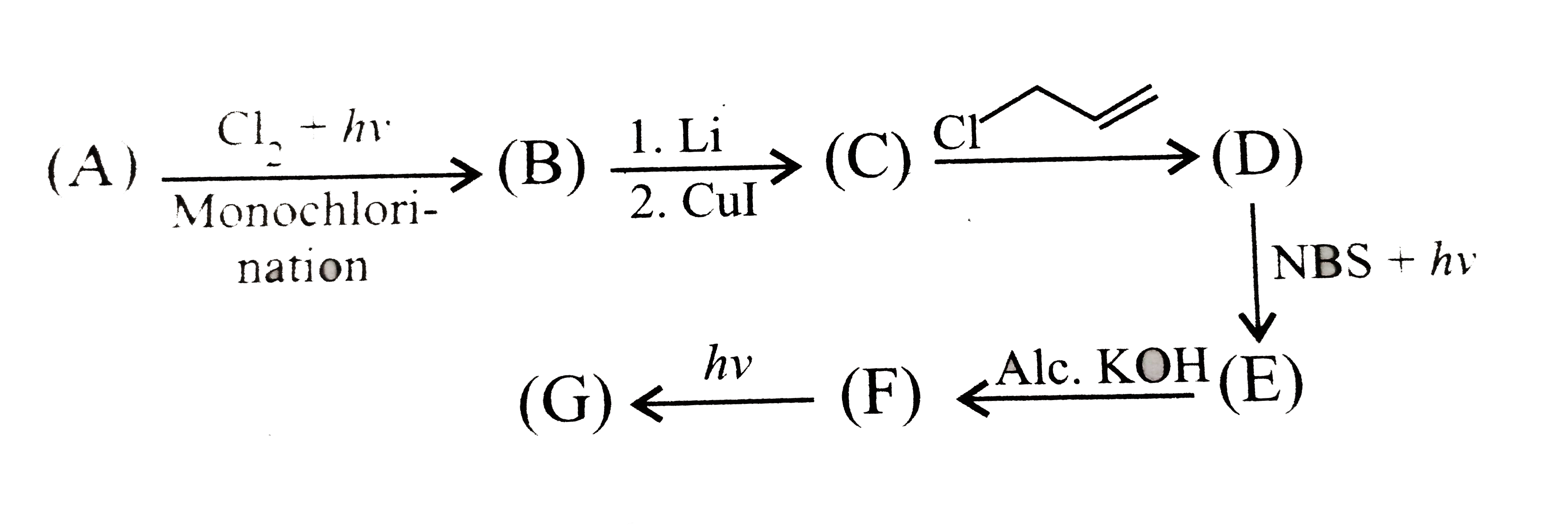
The molecular formula of the hydrocarbon (A) is:04:35View SolutionTwenty millilitres of a gaseous hydrocarbon (A) was exploded with excess of oxygen in eudiometer tube. On cooling, the volume was reduced by 50ml. On further treatement with KOH solution, there was a further contraction of 40 ml.
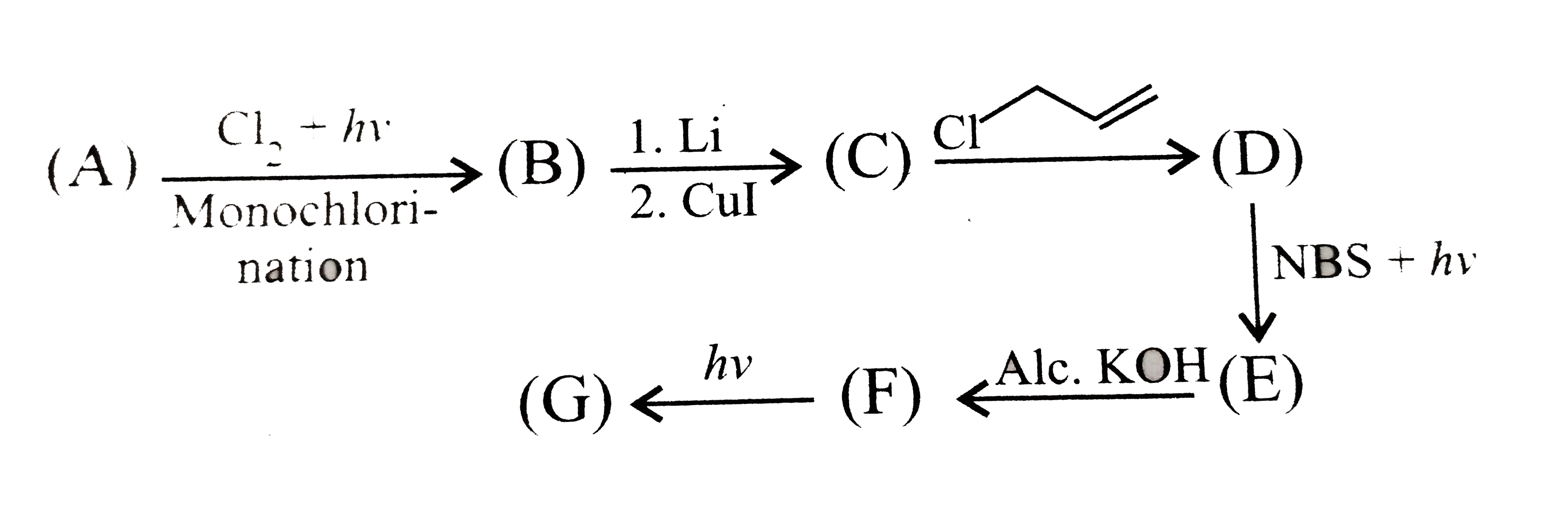
Compound (C) is:07:13View SolutionTwenty millilitres of a gaseous hydrocarbon (A) was exploded with excess of oxygen in eudiometer tube. On cooling, the volume was reduced by 50ml. On further treatement with KOH solution, there was a further contraction of 40 ml.

Compound (D) is:03:54View SolutionTwenty millilitres of a gaseous hydrocarbon (A) was exploded with excess of oxygen in eudiometer tube. On cooling, the volume was reduced by 50ml. On further treatement with KOH solution, there was a further contraction of 40 ml.
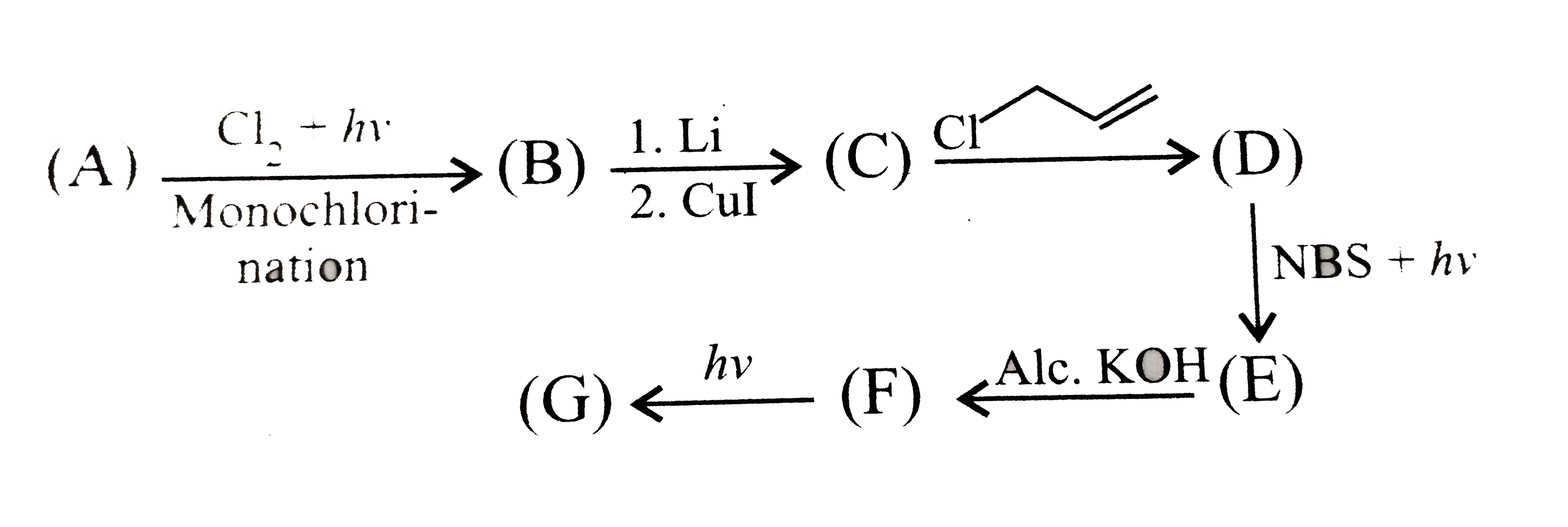
Compound (E) is:05:36View SolutionTwenty millilitres of a gaseous hydrocarbon (A) was exploded with excess of oxygen in eudiometer tube. On cooling, the volume was reduced by 50ml. On further treatement with KOH solution, there was a further contraction of 40 ml.

Compound (C) is:07:13View SolutionTwenty millilitres of a gaseous hydrocarbon (A) was exploded with excess of oxygen in eudiometer tube. On cooling, the volume was reduced by 50ml. On further treatement with KOH solution, there was a further contraction of 40 ml.
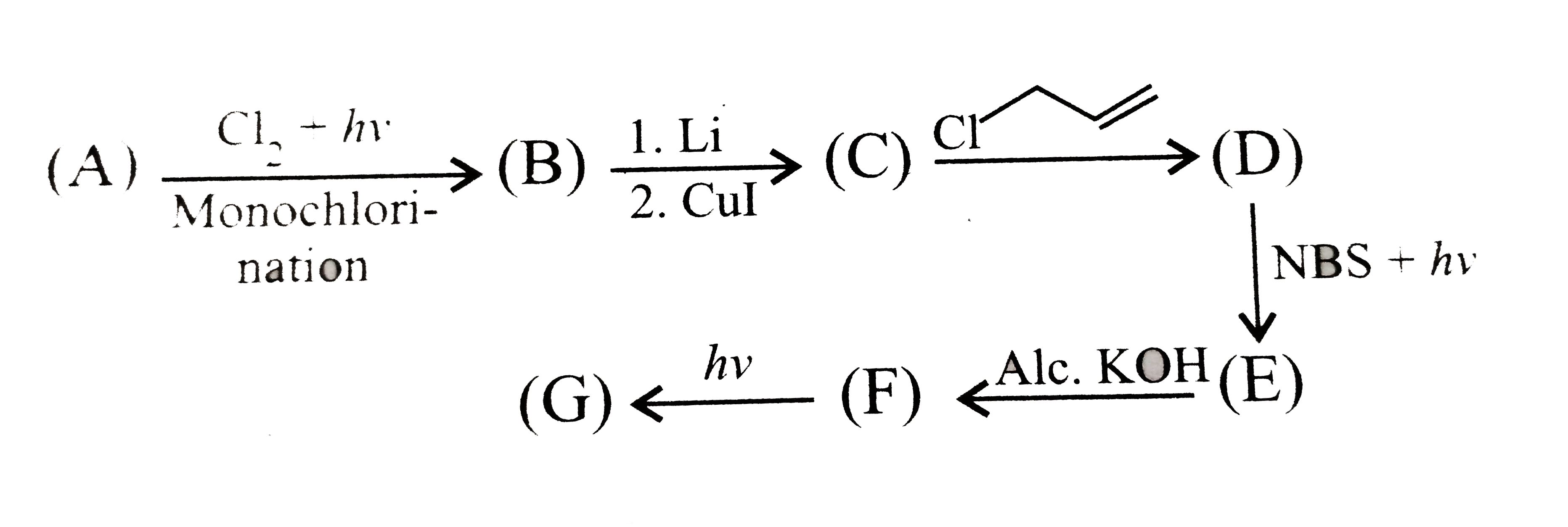
Compound (G) is:05:33View Solution5 " mL of " a gas A containing only C and H was mixed with an excess of `O_2` (30 mL) and the mixture was exploded by means of electric sperk. After explosion, the remaining volume of the mixed gases was 25 mL. On adding a concentrated solution of KOH, the volume further diminished to 15 mL. The residual gas was pure oxygen, The molecular formula of the gas A is.
03:48View SolutionFive millilitires of a gas (A) containing only C and H was mixed with an excess of oxygen (30 ml) and the mixture was exploded by means of an electric spaek. After the explosion, the remaining volume of the mixed gasses was 25 ml. On adding a concentrated solution of KOH, the volume further diminished to 15 ml. The residual gas being pure oxyges.

Compound (B) is:04:15View Solution5 " mL of " a gas A containing only C and H was mixed with an excess of `O_2` (30 mL) and the mixture was exploded by means of electric sperk. After explosion, the remaining volume of the mixed gases was 25 mL. On adding a concentrated solution of KOH, the volume further diminished to 15 mL. The residual gas was pure oxygen, The molecular formula of the gas A is.
03:48View Solution5 " mL of " a gas A containing only C and H was mixed with an excess of `O_2` (30 mL) and the mixture was exploded by means of electric sperk. After explosion, the remaining volume of the mixed gases was 25 mL. On adding a concentrated solution of KOH, the volume further diminished to 15 mL. The residual gas was pure oxygen, The molecular formula of the gas A is.
03:48View SolutionFive millilitires of a gas (A) containing only C and H was mixed with an excess of oxygen (30 ml) and the mixture was exploded by means of an electric spaek. After the explosion, the remaining volume of the mixed gasses was 25 ml. On adding a concentrated solution of KOH, the volume further diminished to 15 ml. The residual gas being pure oxyges.

Compound (E) is:05:18View SolutionFive millilitires of a gas (A) containing only C and H was mixed with an excess of oxygen (30 ml) and the mixture was exploded by means of an electric spaek. After the explosion, the remaining volume of the mixed gasses was 25 ml. On adding a concentrated solution of KOH, the volume further diminished to 15 ml. The residual gas being pure oxyges.

Compopund (F) is:05:34View Solutioni. Compound (A)
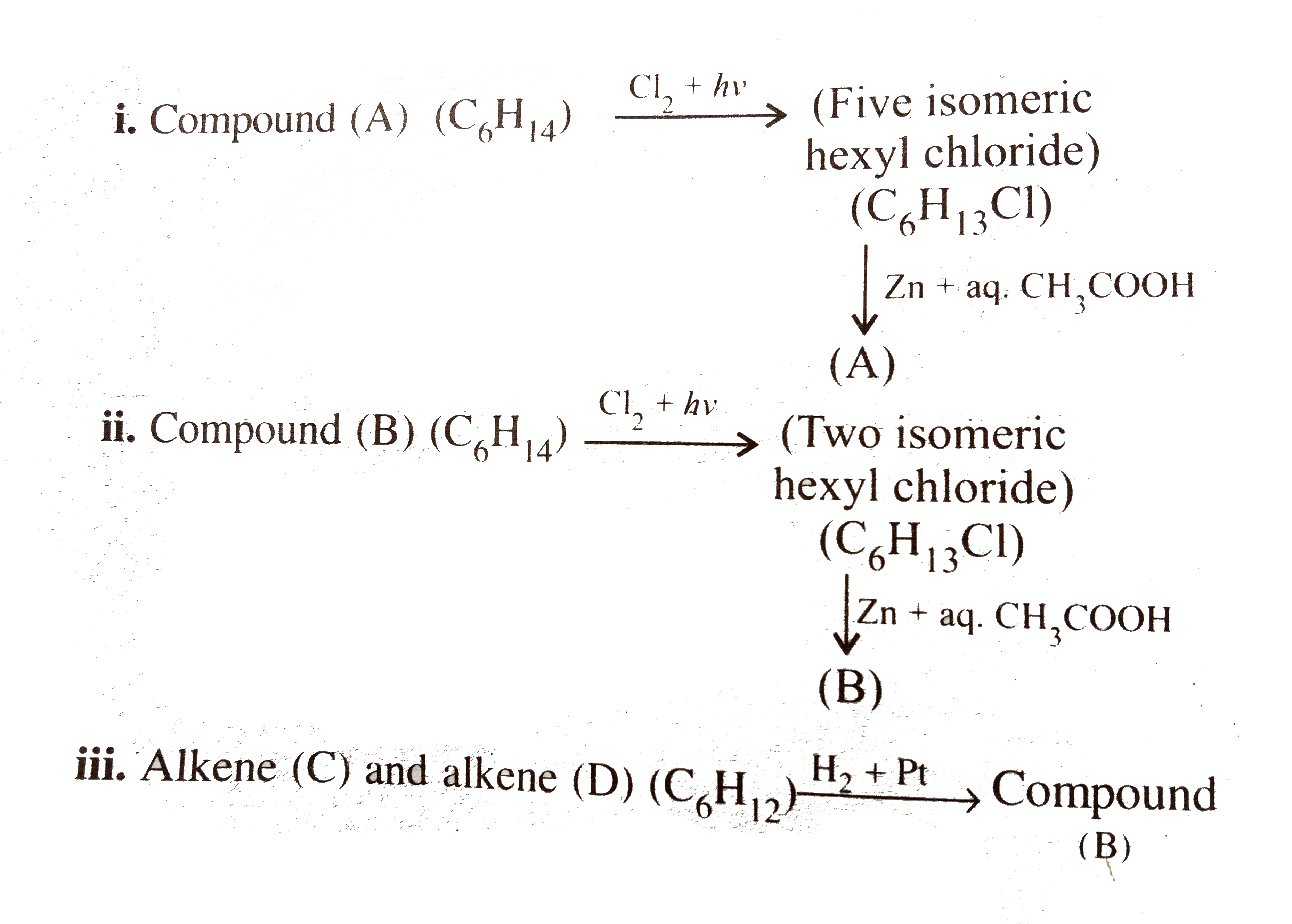
ii. Compound (B)
iii. Alkene (C) and alkane (D)
Compound (A) is:05:05View Solution
(i) Compound (A) is:-
(ii) Compound (B) is:-
(iii) Isomeric hexyl chloride obtained from B are:-
(iv) Compound C is:-05:05View Solution
(i) Compound (A) is:-
(ii) Compound (B) is:-
(iii) Isomeric hexyl chloride obtained from B are:-
(iv) Compound C is:-05:05View Solutioni. Compound (A)

ii. Compound (B)
iii. Alkene (C) and alkane (D)
Compound (A) is:02:39View SolutionA schematic analysis of the reaction of the enantiomer with racemic mixture is shows below:
`{:(d,+,"d and l",rarr,(d)-(d)),("The(+)-form of",,"A racemic mixture of",,+),("chiral molecules",,"other molecules with",,(d)-(l)),(,,50%(d) and 50%(l),,):}`
The products (d-d) and (d-l) are clearly neither identical nor enantiomers (non-superimposable mirror images) as the diastereomers, stereoisomers that are not mirror images' . The formation of diasteromers allows the separation of enantiomers (called resolution) which is not easy as enantiomers have identical physical properties. One general with naturally occurring chiral molecule to form a pair of diastereomers. These can be separated easily as they have different physical properties. If the original chemical reaction can be reversed, the enantiomers can be isolated.
Which of the following is an example of diastereomers ?04:09View SolutionA schematic analysis of the reaction of the enantiomer with racemic mixture is shows below:
`{:(d,+,"d and l",rarr,(d)-(d)),("The(+)-form of",,"A racemic mixture of",,+),("chiral molecules",,"other molecules with",,(d)-(l)),(,,50%(d) and 50%(l),,):}`
The products (d-d) and (d-l) are clearly neither identical nor enantiomers (non-superimposable mirror images) as the diastereomers, stereoisomers that are not mirror images' . The formation of diasteromers allows the separation of enantiomers (called resolution) which is not easy as enantiomers have identical physical properties. One general with naturally occurring chiral molecule to form a pair of diastereomers. These can be separated easily as they have different physical properties. If the original chemical reaction can be reversed, the enantiomers can be isolated.
Which of the following is not true ?03:43View SolutionA schematic analysis of the reaction of the enantiomer with racemic mixture is shows below:
`{:(d,+,"d and l",rarr,(d)-(d)),("The(+)-form of",,"A racemic mixture of",,+),("chiral molecules",,"other molecules with",,(d)-(l)),(,,50%(d) and 50%(l),,):}`
The products (d-d) and (d-l) are clearly neither identical nor enantiomers (non-superimposable mirror images) as the diastereomers, stereoisomers that are not mirror images' . The formation of diasteromers allows the separation of enantiomers (called resolution) which is not easy as enantiomers have identical physical properties. One general with naturally occurring chiral molecule to form a pair of diastereomers. These can be separated easily as they have different physical properties. If the original chemical reaction can be reversed, the enantiomers can be isolated.
How many diastereomers are possible among all the possible stereoisomers of 2,3-dibromopentane ?03:31View Solution
Paragraph for problem questions and complete solutions for chapter ALKANES AND CYCLOALKANES of CENGAGE CHEMISTRY (ENGLISH) of Class 11
